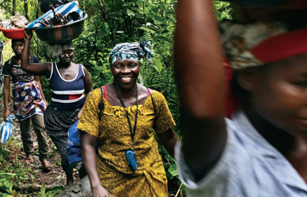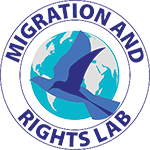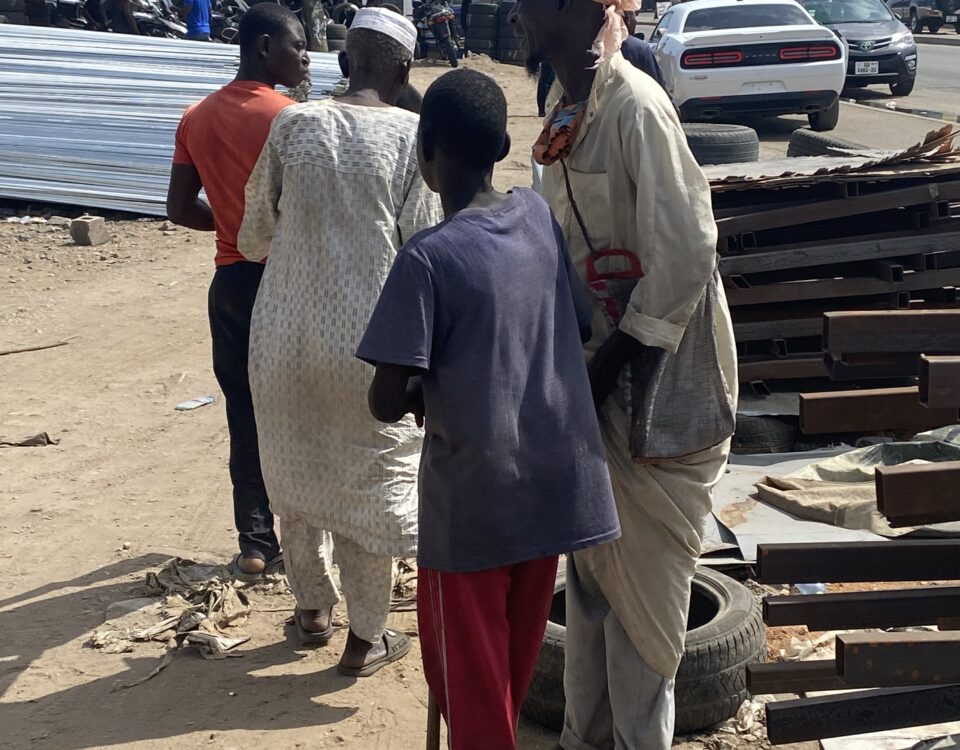Migration and Gender in West Africa – Ghana Brief

Migration Practices to the Gulf States
December 1, 2022
Community-Based Monitoring System (CBMS) Under Educational/Vocational Support Program
July 3, 2023General overview
Ghana remains a source, transit, and destination country for migrants in West Africa. It ranks 5th among the top 10 destinations for migrants in West Africa. Ghana has a well-defined national migration policy that addresses legal and regulatory aspects of migration. The Immigration Act (573) of 2000, the Immigration Amendment Act (848) of 2012, and the Immigration Regulations (L.I 1691) of 2001 serve as Ghana’s primary legislation regulating immigration. Provisions of the Labour Act 2003 and Labour Regulation 2007, regulate and monitor labor emigration from the country.
The implementation of the governance systems is however complex. There is no single coordinating agency for migration-related activities and different government ministries, departments, and agencies are tasked with formulating policies and managing different aspects of migration-related issues (key actors include eight ministries, three sub-ministerial bodies, two offices at the Presidency, and three autonomous institutions). E.g., the Ministry of Gender, Children and Social Protection has a human trafficking secretariat and a governing board, the Ministry of Employment and labor relations houses the labor department and foreign recruitment etc. This process lacks a coordinated approach and cross-cutting themes such as gender dynamics are lost in the process or by default relegated to government agencies with that specific mandate such as the Ministry of gender children and social protection
Prevalence
The lack of capacity for obtaining, storing, and processing migration data in Ghana and the porous borders in the sub-region make it difficult to obtain accurate information on migration patterns. Official figures are difficult to obtain and vary depending on source documents. The Ghanaian emigrant stock soared from 762,000 in 2010 to 1,004,000 in 2020, with 466,000 living in other West African countries. Male emigrants outnumbered female counterparts by 6%. Over the same decade, the number of immigrants in Ghana, primarily from the region, rose from 194,000 to 476,000 (UN DESA, 2021).
Data from Ghana’s statistical service also shows increases in each category, with Nigeria and Cote d’Ivoire being the top two destinations. Despite the 2017 national ban on visa provisions for domestic workers, 914,984 persons, mostly women, departed Ghana for the Middle East. In 2015, the proportion of internal migrants in urban areas exceeded those in rural areas, with more women (58%) than men (42%).
Human trafficking: trafficking disproportionally affects women and girls. Trafficking does not always involve movement. However, migrants in a new environment and more vulnerable to being trafficked. According to the ILO/Walk free trafficking report, 40.3 million people around the world were in modern slavery women and girls constituted 28.7 million or 71%. The estimates for 2021 of the same report put the number of victims trafficked globally to 49.6 million with women and girls forming about 79% (a 10 million increase from the previous). The table below shows recent global trends in migration. Migrants: world migration report 2020, estimated 281 million international migrants globally, 48% or (134.9 million) being women. A 26% growth from 2010.

Causes/vulnerabilities to Migration
- Economic factors: migration to urban centers internally and internationally for jobs
- Access to social services such as education and health
- Force migration (IDPS) due to natural disasters such as flooding
- Force migration (IDPS) due to ethnic conflict and violence
- Refugees mostly from neighboring countries
- Human trafficking internal and cross-border
- Others include increases in extreme poverty, gender-based violence, social and cultural practices, and the lack of social capital and awareness of the dangers of migration
Gendered Dimensions of Migration in Ghana
Gender influences reasons for migrating, who migrates and to where, how people migrate and the networks they use, opportunities and resources available at destinations, and relations with the country of origin. Migration has always been gendered with men often seen as the breadwinners of their families, often traveling abroad or to economically active communities to enable them to secure resources to cater for their families. Within this discourse, left behind wives and children are seen as dependents. This belief is reinforced by patriarchal socio-cultural beliefs and historical antecedents. This trend in belief is changing as more and more women are voluntarily migrating to fulfill their own economic needs previously reserved for men and in some cases forced to migrate for purposes of exploitation. Others are also migrating for educational reasons. Indeed, both married and single women are migrating.
With this changing trend in migration and with ever-improving data collection on migration, there is a steady increase in the reported number of female migrants across the subregion year on year:
UNDESA 2006 trend of female migration from 1960 to 2005
| Year | No. of Female Migrants | Period Chang |
| 1960 | 3859 | 0=base |
| 1965 | 3992 | 133 |
| 1970 | 4241 | 249 |
| 1975 | 4739 | 498 |
| 1980 | 6217 | 1,478 |
| 1985 | 6410 | 193 |
| 1990 | 7505 | 1,095 |
| 1995 | 8357 | 852 |
| 2000 | 7785 | 572 |
| 2005 | 8092 | 307 |
Ghana trends
There are gender disparities in migratory patterns in Ghana, reinforced by social, economic and cultural norms, compounded by the lack of adequate policies to guarantee the protection of women’s rights. Women still experience early child marriage, female genital mutilation, domestic work, and education among others. These women, therefore, lack relevant social networks and information to make informed migration choices.
During the colonial era, the British colonial policy of recruiting men from the protectorates in the North and from other rural areas to serve as labour on plantations and factories in the South, enlisting men to join the military among others saw a high mobility rate among men during this period.
The unequal distribution of development interventions between north and south has reinforced the movement of rural dwellers to commercial centers for work. The ‘Kayaye’ phenomenon where young girls from northern Ghana and other rural areas migrate to southern Ghana to engage in head pottery continues to rise. In 2015, the proportion of internal migrants in urban areas exceeded those in rural areas, with more women (58%) than men (42%) (GSS, 2016)
The availability of domestic work in the Gulf states and other parts of the middle east has seen a particular increase in the number of women and young girls migrating to the Gulf states as domestic workers. According to the Ministry of Employment and labour relations, (2018), 914,984 persons, mostly women departed Ghana for the Middle East
Forced migration as a result of flooding and ethnic conflicts particularly in northern Ghana has resulted in the migration of both men and women. There were also 5,000 new IDPs due to conflict and violence triggered by land disputes between ethnic communities in the country’s northern region (IDMC, 2019). In 2018, there were 61,000 new IDPs due to disasters in Ghana, 56,000 of them displaced by flooding according to the IOM Internal Migration in Ghana: A Country Profile (2019).
Human trafficking affects men, women and children. Due to the clandestine nature of this activity, estimates are hard to reach. However, reports from NGOs Free the Slaves in 2016, and International Justice Mission in 2017) in specific communities indicate a high prevalence of internal trafficking of children, particularly boys into forced child labour on the Volta Lake
Education induce migration is evenly split with men in a slight majority. International students in Ghana: Increasing numbers of international students are registered in Ghana, with as many as 12,978 in 2017. The majority of these students came from Nigeria (70.3%), Gabon (3.9%),
Côte d’Ivoire (3.3%) and the Congo (3.3%). (UNESCO Institute of Statistics (UIS),2018). Ghanaian students abroad: In 2017, 12,559 Ghanaian students were studying abroad. The main countries of destination for these students were the United States (2,990), the United Kingdom (1,389), Ukraine (1,000), Canada (924), and South Africa (651). (UIS, 2018)
Recommendations
Migration if properly managed can bridge gender disparity gaps and bring enormous benefits to leaving behind spouses, children and other relatives. Ghana’s migration policy goals, like the ECOWAS Protocol, recognize gender inequalities within and outside Ghana although it is merged with the cross-cutting goal of Countering xenophobia, racism, discrimination, ethnocentrism, vulnerability, and gender inequality within and outside Ghana
Government of government needs to enhance its capacity and coordinate mechanisms to implement the gender policy and uphold the rights of women. This will go a long way to prevent gender-based violence among women.
Civil society organizations to enhance coordination with the government and to advocate for the full implementation of the government’s commitment as a pathfinder country under Alliance 8.7 to combat human trafficking and modern slavery. Closely related to this effort is the work towards achieving SDG 5 on gender equality and empowering all women and girls
A community-based approach with community leaders to spearhead an awareness-raising campaign among the youth on safe and ordered ways to migrate will ensure that everyone has access to migration information to enforce their choices. This will further reduce the risk of exploitation and abuses in migration. These can be done in various ways including, the establishment of migration information centers, pre-departure orientation for migrants, and formation of migrant networks among others
Improved data collection on migration trends in the country and subregion. This will ensure that there is reliable data on migration trends to inform social protection interventions and other development initiatives.


